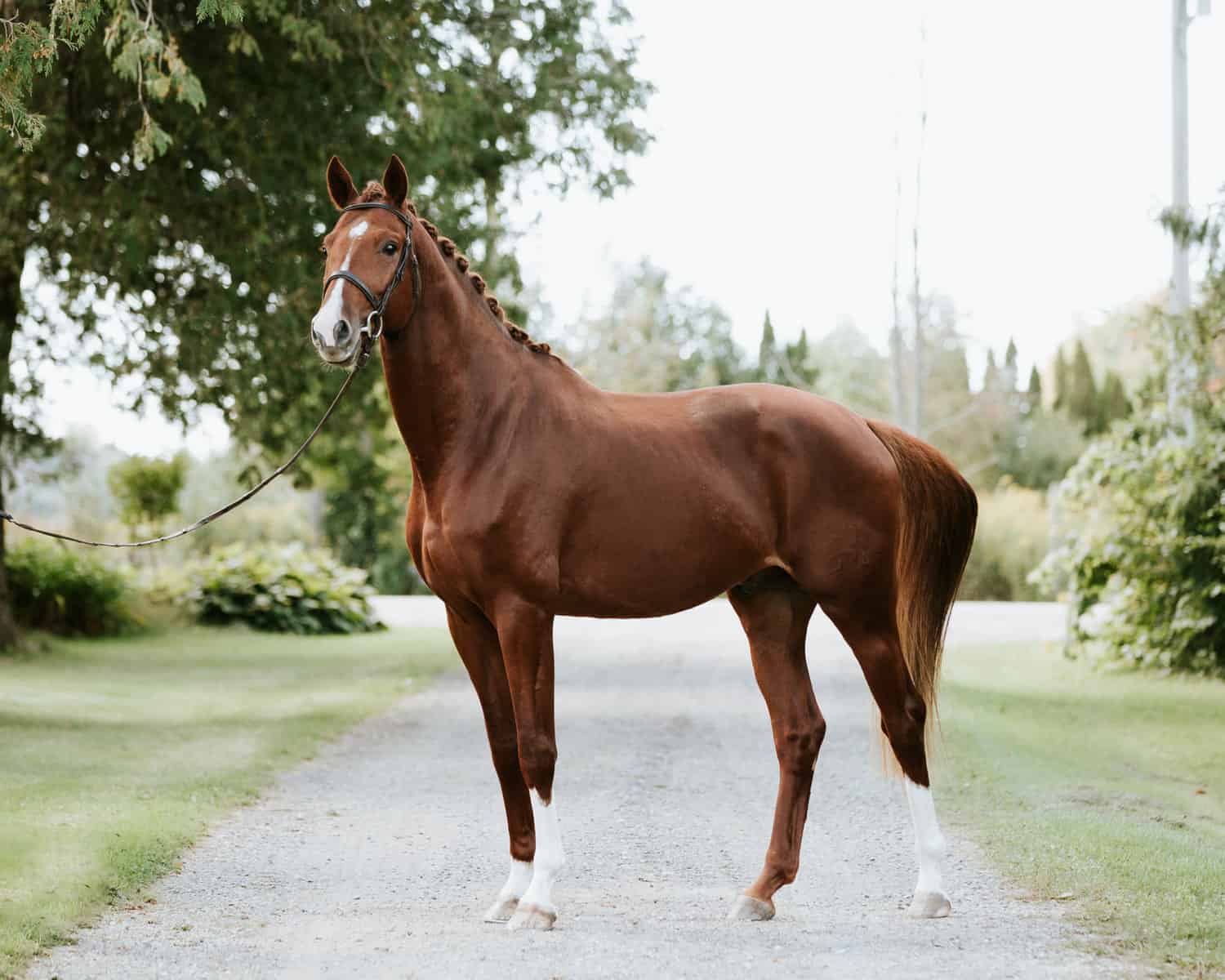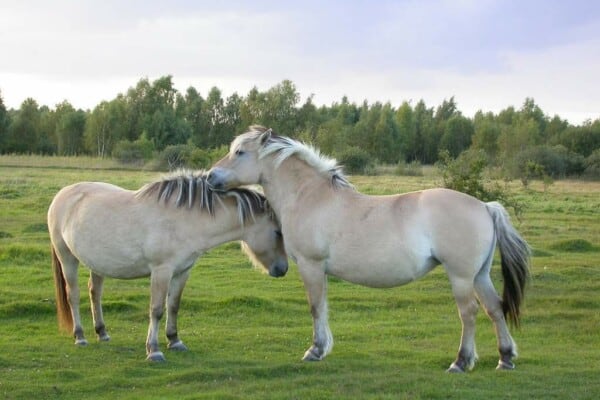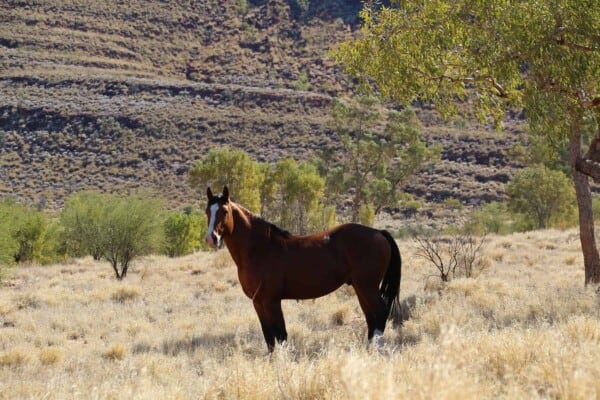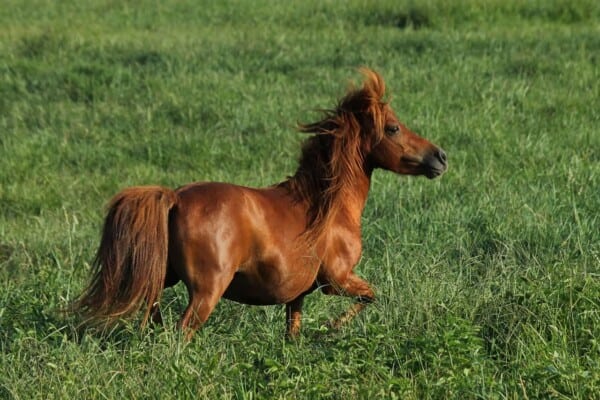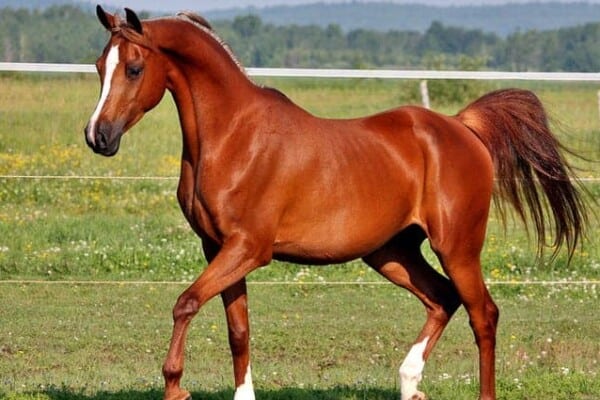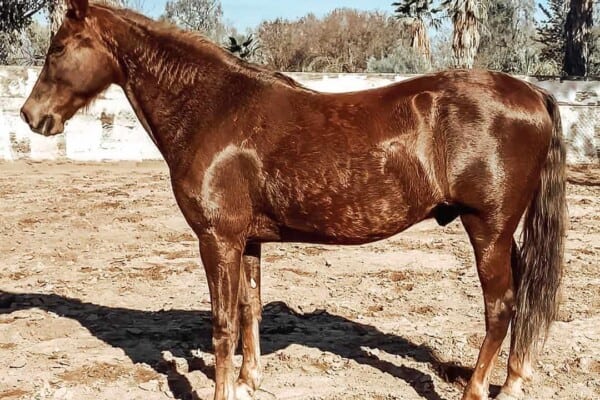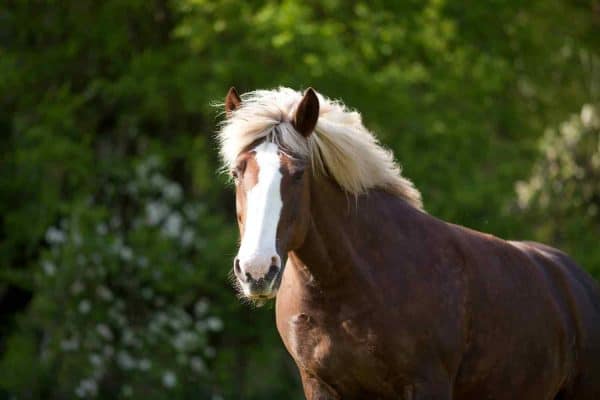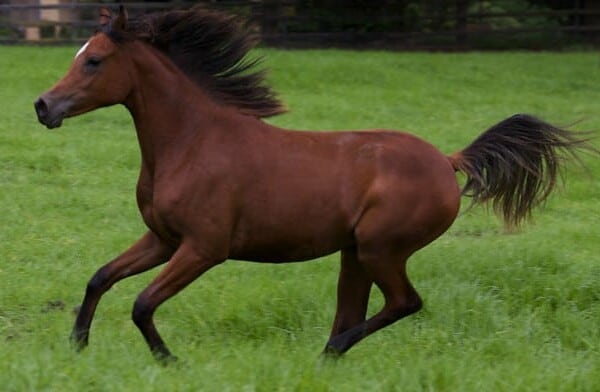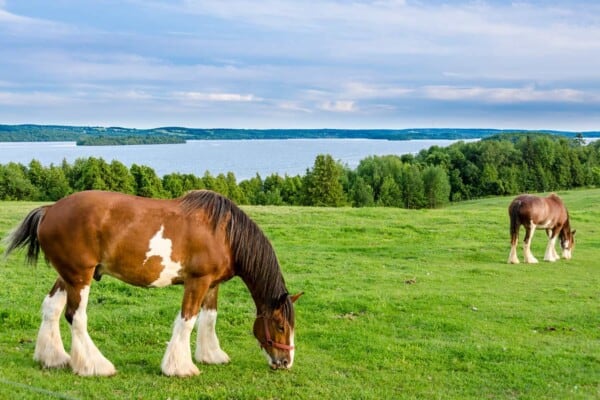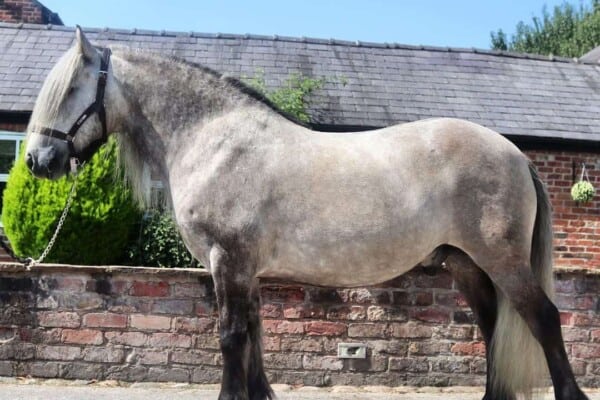The Hanoverian horse is a dream come true to any competitive rider.
This is a breed that perfectly balances out both elegance and athleticism. Because of this, the Hanoverian horse is known as one of the most distinguished equine breeds in the world.
There is no shortage of events that this breed can take part in, which is why it is such a popular choice in the first place.
Here’s an example of how versatile the Hanoverian horse breed is:
- It is a very popular dressage horse
- It can keep up with the toughest of competition during jumping events
- It can be used in tournaments where it stands a decent chance of winning
That in itself should give you a pretty good idea on why the Hanoverian horse breed is known as the epitome of excellence and achievement in the world.
Still, just because a breed is popular that doesn’t mean that it’s easy to take care of.
In fact, there are more than a handful of misconceptions that go around when it comes to the Hanoverian horse breed.
So, allow us to guide you through everything and educate you on everything you need to know about the Hanoverian horse breed.
But before we get into the fun stuff, let us first go over a brief history lesson:
Hanoverian Horse Breed: Origins and History
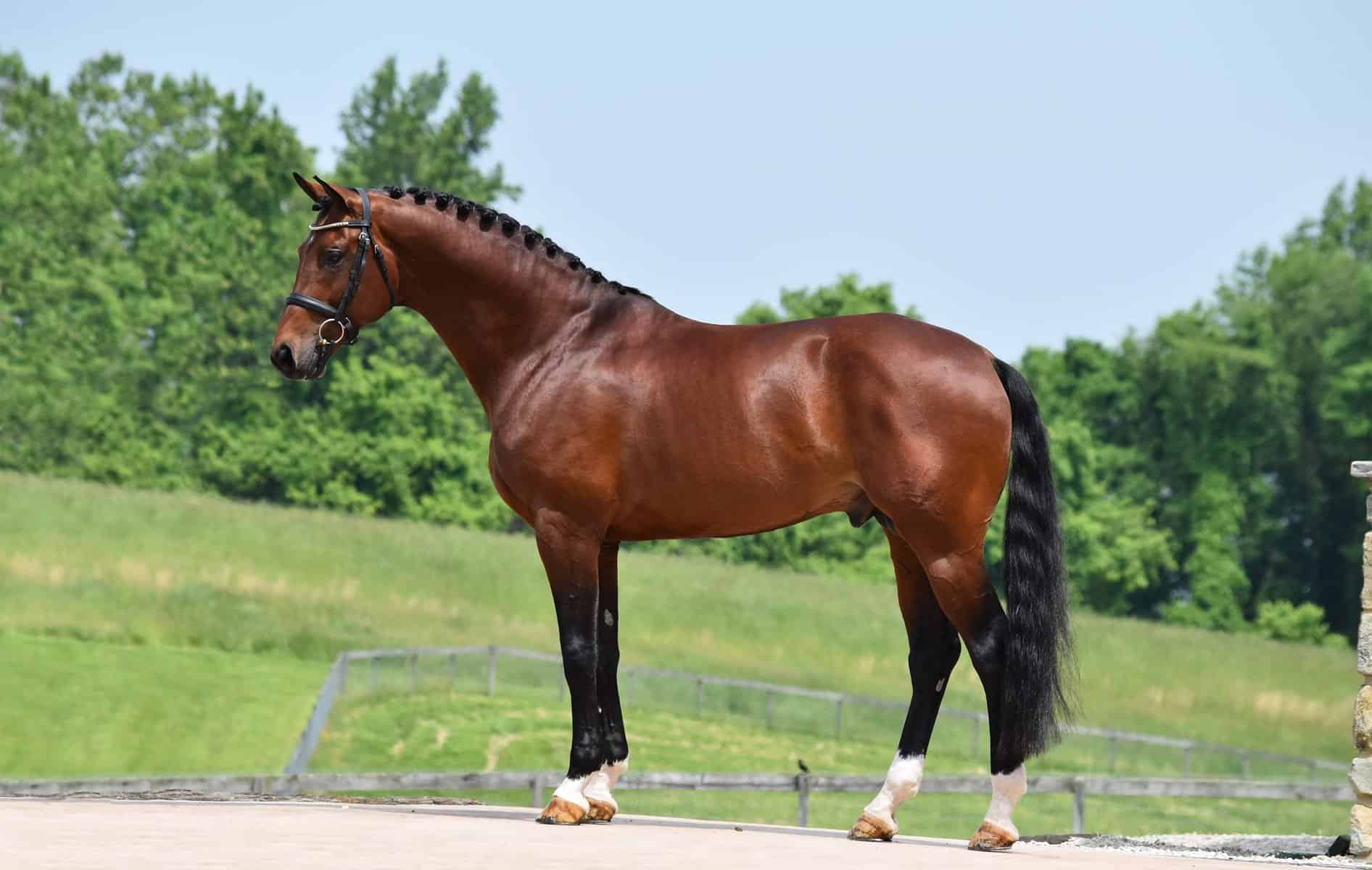
The Hanoverian horse breed may actually be one of the most well-documented horse breeds in the world.
This is because from the moment they were first developed, this breed became very popular and so there’s a lot of info about it.
So, we know for a fact that the breed originated from the Lowe Saxon Province of Germany around 400 years ago.
We know this because the King of England George-II founded the State Stud at Celle with the Elector of Hanover of Lower Saxon Province in 1735.
This is an especially important development as here is where they started a series of crossbreeding programs.
These programs would eventually lead to the creation of the Hanoverian Horse breed.
Their main goals here were to create a horse breed that could do the following:
- Help out with heavy duty agricultural works
- Be ready to be taken to war as cavalry mounts
- Be available for harness racing events
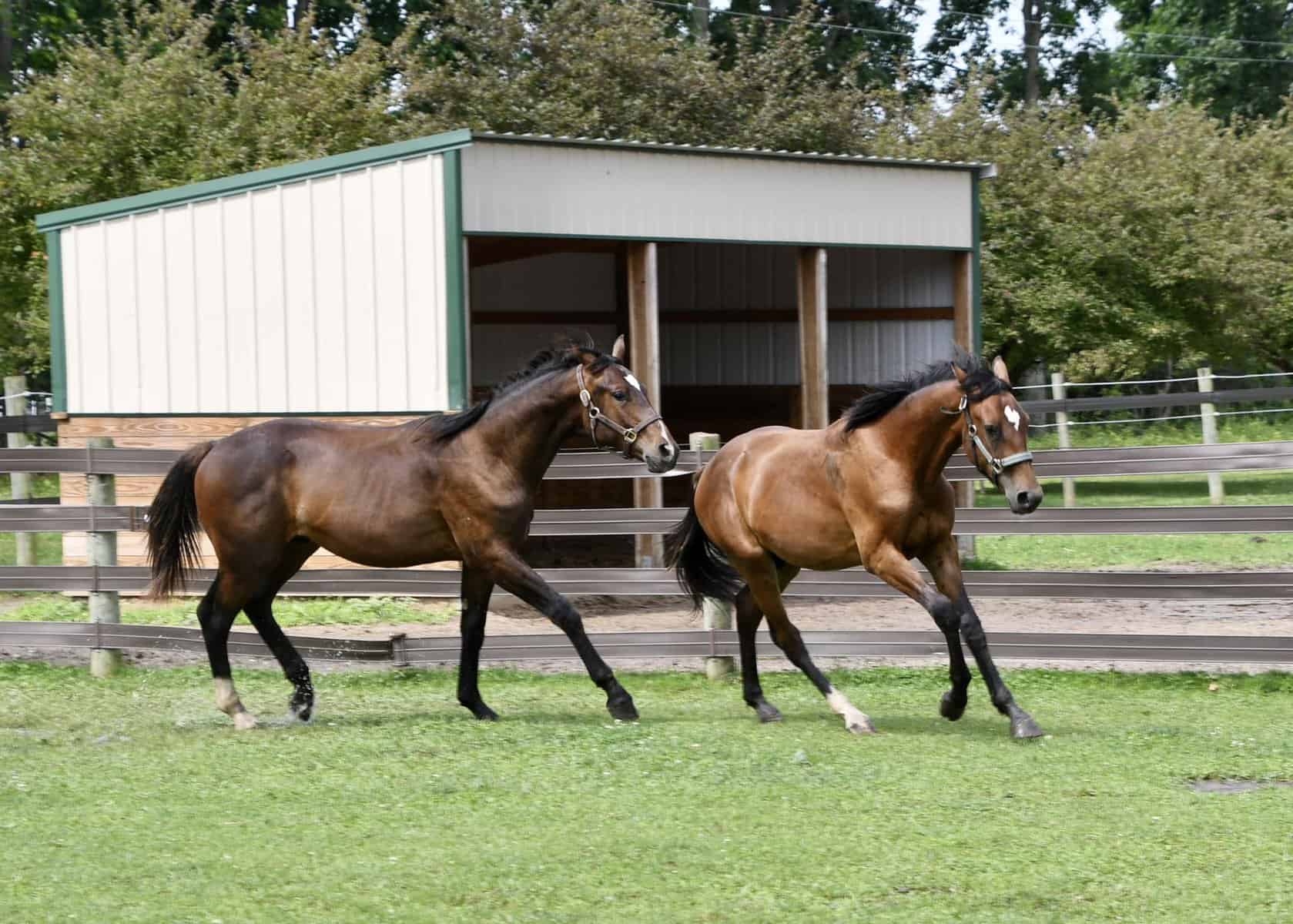
To create this new breed, the breeders took the local mares and they crossbred them with the following breeds:
- The Thoroughbred
- The Cleveland Bay
- The Andalusian
- The Holsteiner
- The Mecklenburg
- The Neapolitan
- The Prussian
After a few years, they finally came upon the strain that would become the Hanoverian horse breed.
By the time the 18th century rolled around, the Hanoverian had also become one of the best coach horses in Europe.
Fast forward to the year 1844 when the breed was officially recognized as its own, and as such it was able to breed as an individual breed.
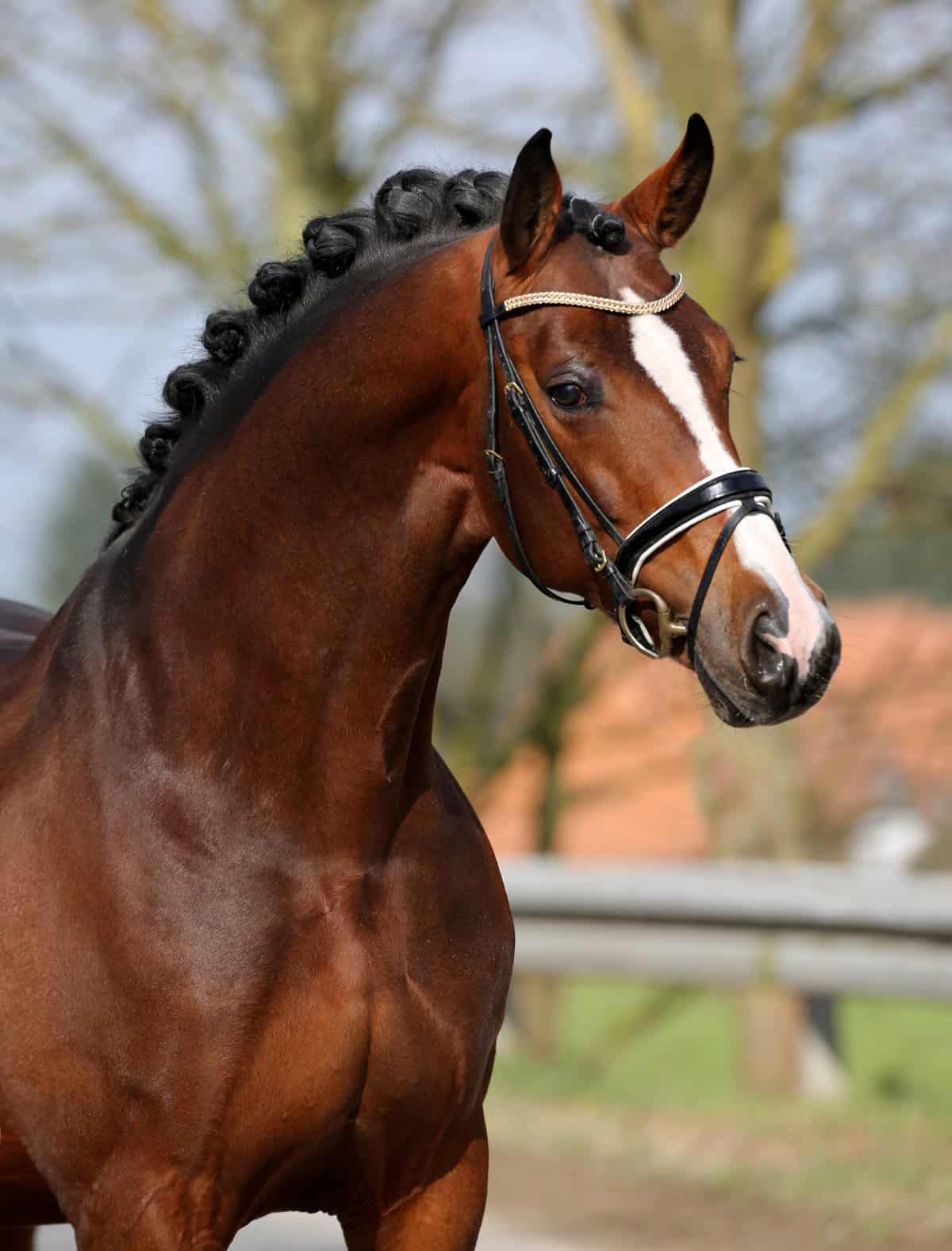
By the time the year 1867 came up, the Hanoverian Horse Society created two major strains of Hanoverians:
- One that was better suited for the military
- One that was better suited as coach horses
Throughout the following couple of years, two major events happened, World War I and World War II.
As these dreadful events played off, the Hanoverian horse breed also went through the following changes on its own:
- During WWI, the breed was altered as there was a higher demand for carriage horses
- After WWII, the breed was altered yet again to match the newfound demand for games, sports and pleasure riding
After the dust settled, the breed had reached its peak.
So, this is how the modern Hanoverian horse became known as one of the best coach and military horses in the world.
Hanoverian Horses’ Appearance

Now that we know the breed’s history, let us go over what the modern Hanoverian horse should look like.
For starters, these horses are known for exhibiting the following traits:
- This is a very hardy horse breed
- It is generally a very healthy pick, one that will rarely get sick
- It is an elegant horse breed, which is proven by how many dressage events it won over the years
On top of that, they also exhibit the following traits:
- They have a very strong and muscular neck
- Their limbs are incredibly powerful
- Their body is quite stout
- They have a gentle demeanor to their movements, which makes them great picks for beginners
- They have a very athletic movement
- They are easily trainable
This breed is also known for having very expressive eyes. In fact, you should be able to tell what your horse is thinking based off of their eyes.
Their neck is so impressive that it’s worth mentioning twice too. This makes them very sturdy on harsher terrains.
Their shoulders are slopping downwards and the hock is very well developed too.
Their hooves are always going to be a good indicator of the breed’s health, so always keep a close eye on them.
Hanoverian horses generally have very healthy-looking hooves, so if you see any problems there contact a vet as soon as possible.
Hanoverian Horses: Height and Weight

The typical Hanoverian horse is an average sized horse that does not seem too imposing or too small to the naked eye.
In fact, most of these horses will range between 15.5 and 17.2hh or 62 to 70in in length. Although keep in mind that for your horse to grow to its largest size you will need to feed it a higher quality diet.
The usual Hanoverian horse, regardless of whether we’re talking about a mare or a stallion, will usually reach around 16.2hh or 65in in total.
At the same time, these horses can get quite heavy, usually ranging between 600 and 700kg or 1,300 to 1,500lbs each.
This in itself makes the Hanoverian horse breed a bit of a larger animal, although that’s not to say that it is one of the largest of its kind.
Colors and Markings of the Hanoverian Horse Breed
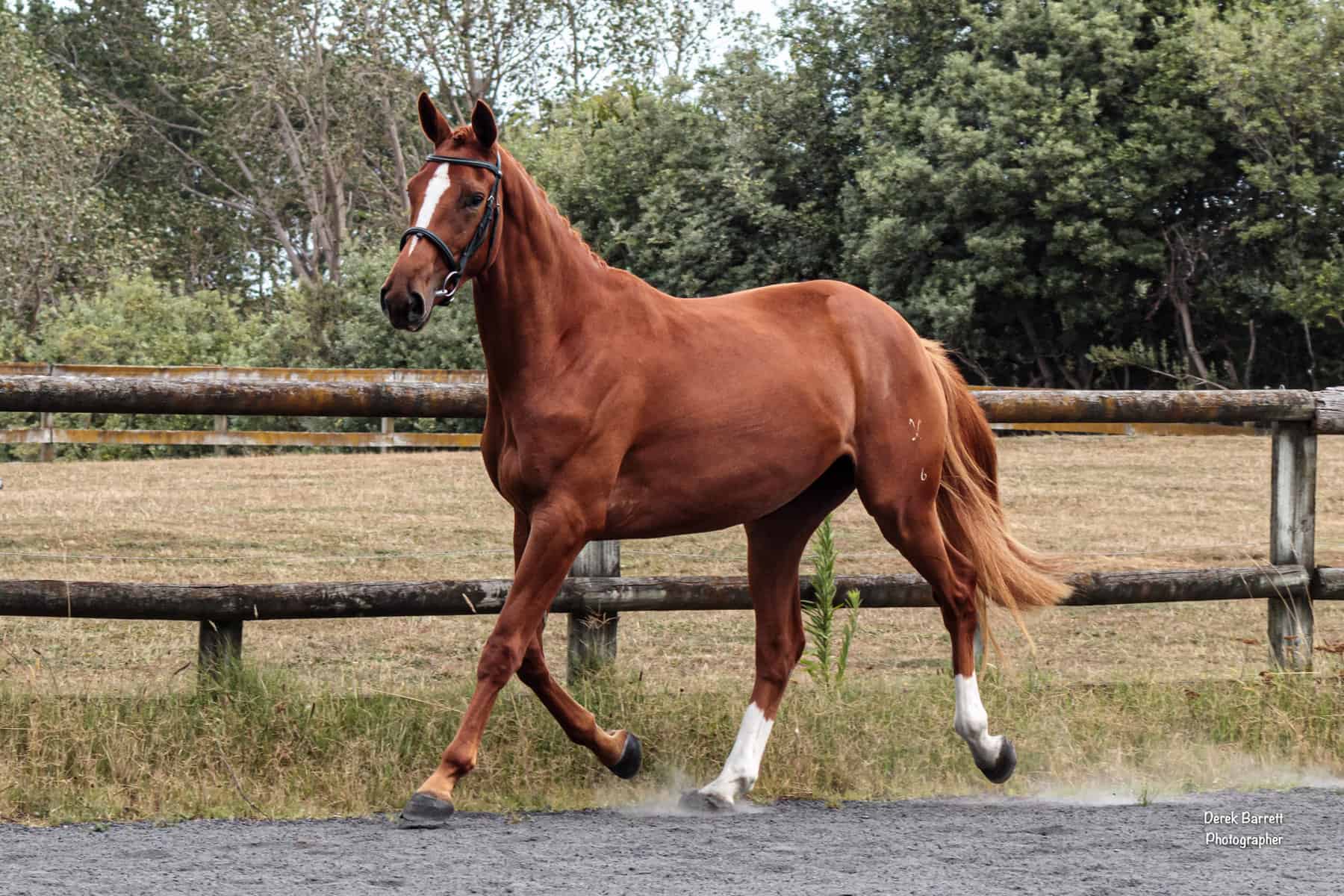
You can pick out a horse and its breed based on their color and markings alone. This also applies when identifying the Hanoverian horse from the pack.
The average Hanoverian horse will have one of the following coat colors:
- Black
- Bay
- Chestnut
- Grey
At the same time, you should not invest into one of the following colors if you want to take part in any official event:
This is because these colors are not actually accepted by the Association, so getting them registered is nigh impossible.
At the same time, if you want a good horse and you don’t care about entering any competitions, definitely go for them.
As far as the markings of the Hanoverian horse are concerned, you can expect them to have the following:
- Stars
- Blaze
- A white coronet
These markings can be found all across the horse’s face, forehead and legs, and the horses that have them are recognized.
So, if your Hanoverian horse has those markings then you can still get them registered into any event whatsoever.
Behavior and Temperament
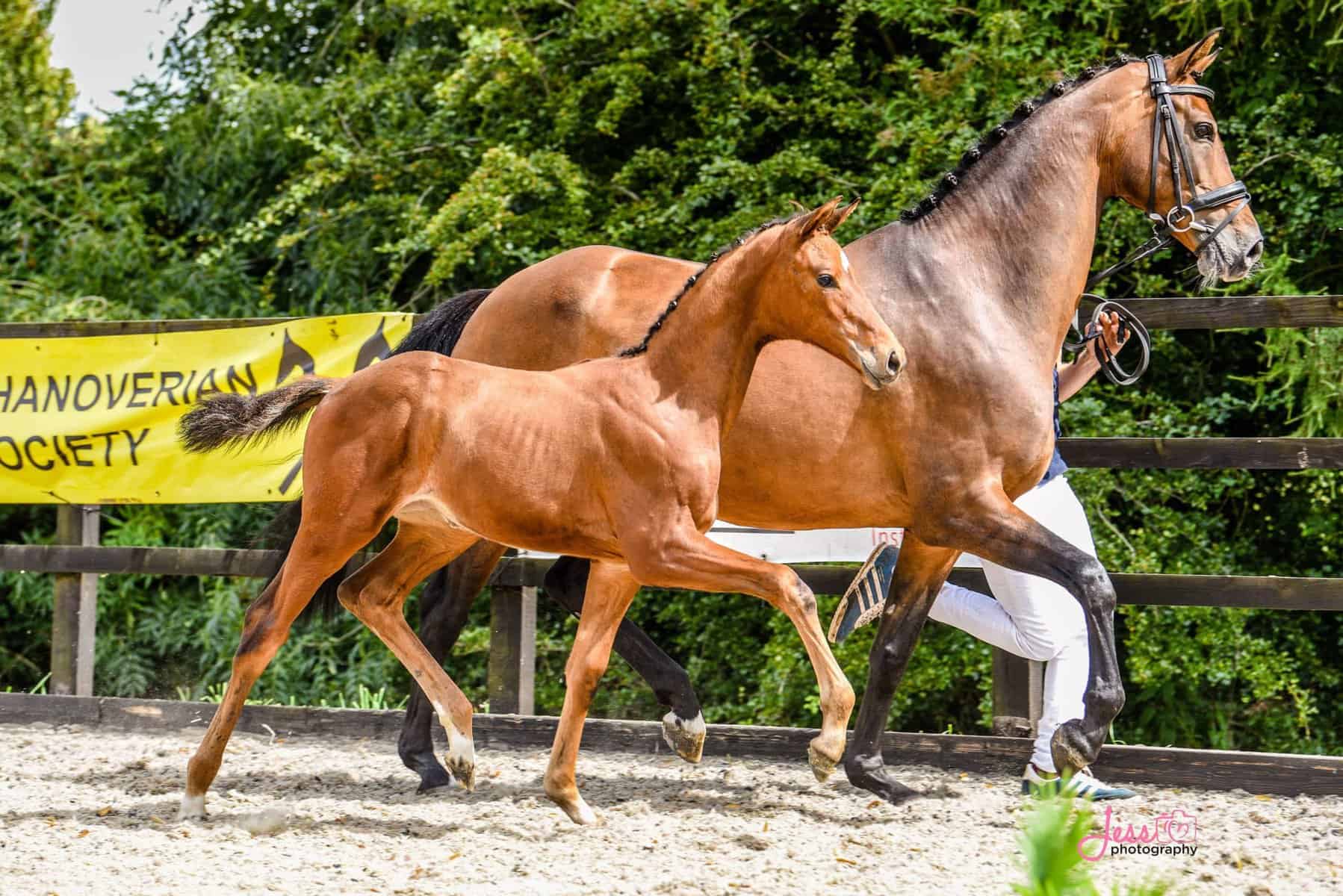
The Hanoverian horse breed is known for being very even-tempered. In fact, these horses are about as gentle as they get.
Thanks to how intelligent and well behaved they are, they are also very easy to train, and they can be trained into any discipline.
If we had to choose three behavioral characteristics to describe the Hanoverian horses, we would go with the following:
- They are very disciplined creatures
- They are calm and always ready to do as they’re told
- They are willing to put in the work, a trait that is actually quite uncommon in the equestrian industry
The Hanoverian horse has been used in a lot of different practices over the years, with its most popular usage being carriage puling.
The main reason behind this is the fact that the breed is strong and disciplined enough to not cause any disturbance to the carriage.
So, even on very tough terrain, Hanoverian horses are surefooted enough to reach their destination in one piece.
This trait has also made the breed into a very popular choice for riding kids and beginners all the same.
As you can see, there is no shortage of practices that the Hanoverian horse can be used for.
Grooming Hanoverian Horses
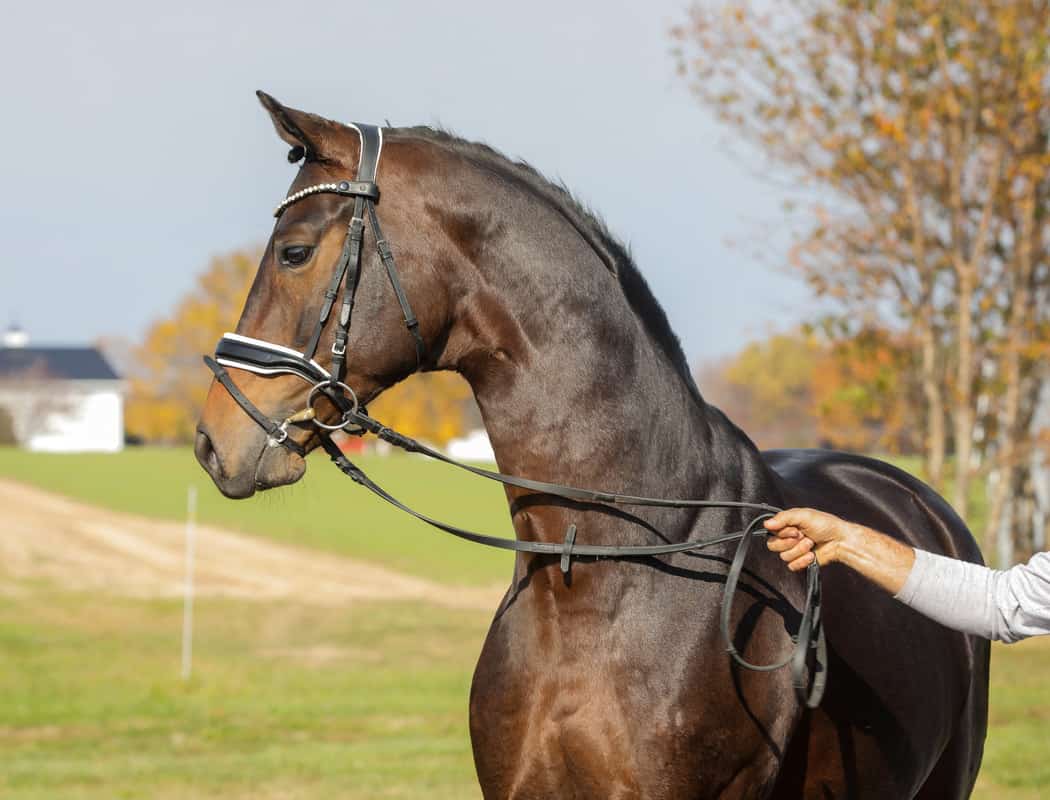
If you want to make sure that your Hanoverian horse looks his best and is disease-free, you will need to groom them on a daily basis.
Not only that but you should also do the following:
- Bathe them on a weekly basis
- Clip their mane and tail every so often
- Brush them on a daily basis to make sure that their mane and tail is clean and smooth
At the same time, you should make sure that the stable is set on a high ground. Also make sure that the horses have plenty of natural lighting inside and that the air can come in and out with ease.
If you can afford it, we recommend that you clean the horse stable with disinfectants on a regular basis.
This will ensure that your horses live a long and happy life, and that they don’t catch any diseases from their environment.
Last but not least you should contact a vet and schedule regular meetings with your horses.
This will ensure you of the fact that the horses will not catch anything, which is paramount to their health.
Hanoverian Horses: Diet and Nutrition
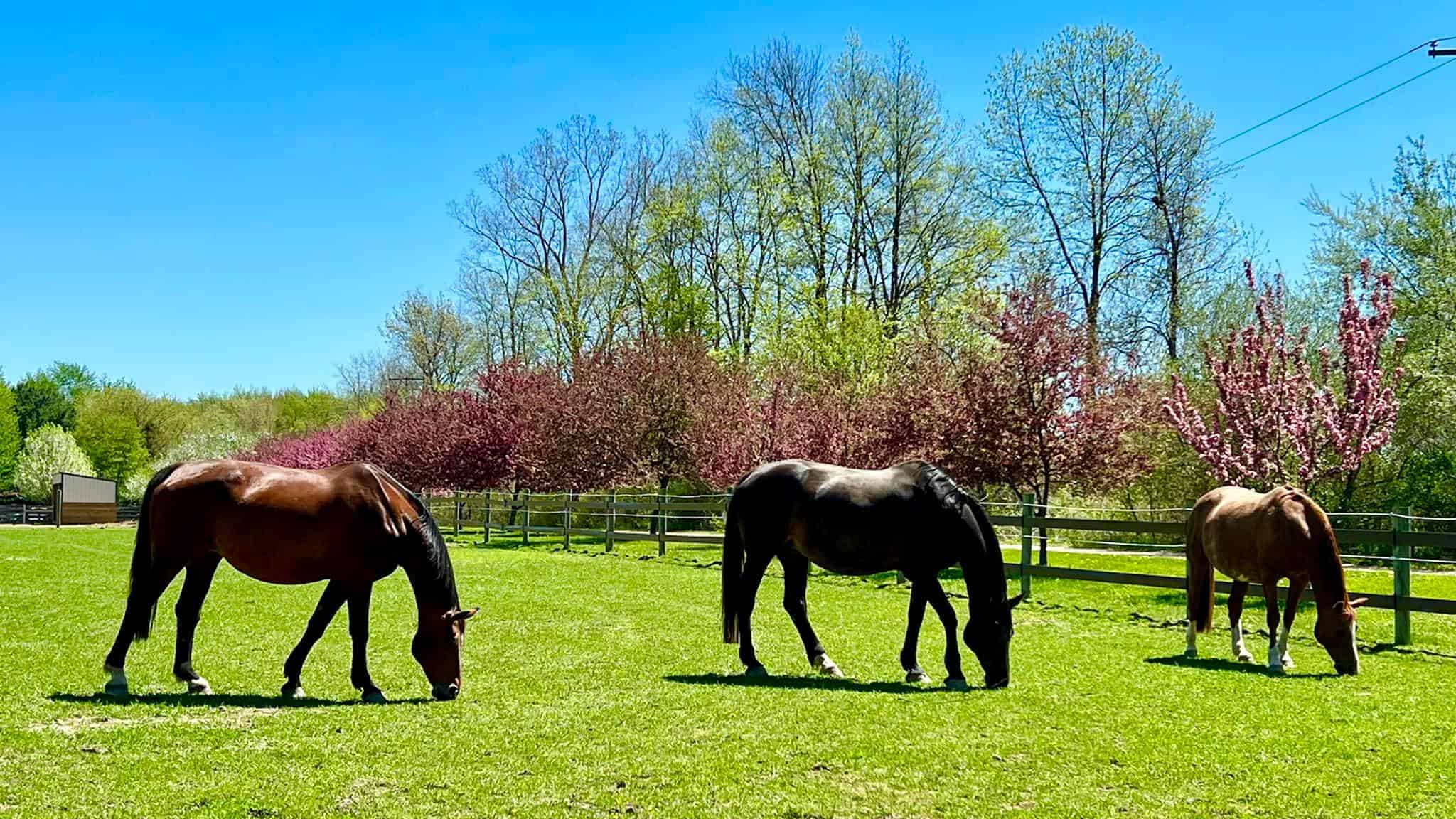
For the most part, this is what you should have in your Hanoverian horse’s feed:
- Maize/corn
- Barley
- Gram
- Wheat
- Bran
- Any other grains you’d normally give horses
On top of that you will need to supplement your horse’s feed with plenty of green grass and hay.
Hanoverian horses love pasture, so if you can’t afford to keep them free range then you should add horse supps in their diet.
Which supps should you go for? Just contact your local vet and ask them to test your horse and see what they need.
You should also make sure that your horse has free access to drinking water.
Try not to overfeed your horse either, as they will start putting on weight overnight if you are not careful.
You should be able to find an equine nutritionist so if you see that your horse is malnourished or overweight, contact them immediately.
Health Issues of the Hanoverian Horse Breed

For the most part, Hanoverian horses are quite hardy and healthy animals.
This means that they very rarely contract any sort of equine diseases.
Hanoverian horses also have very healthy bones, and as such they usually stay away from any disorders there.
Still, your horse may be affected by diseases such as the Osteochondrosis dissecans or OCD in their joints.
Not only that but your horse may also catch the Wobbler disease, osteoarthrosis and even the dreadful navicular syndrome.
To make sure that your horse is not susceptible to any of these disorders we recommend that you check in with an expert every 3 months.
Doing so will decrease the odds of your horse dying prematurely by a tenfold, so while it may be expensive, it’ll be worth it.
Unique Characteristics of the Hanoverian Horse
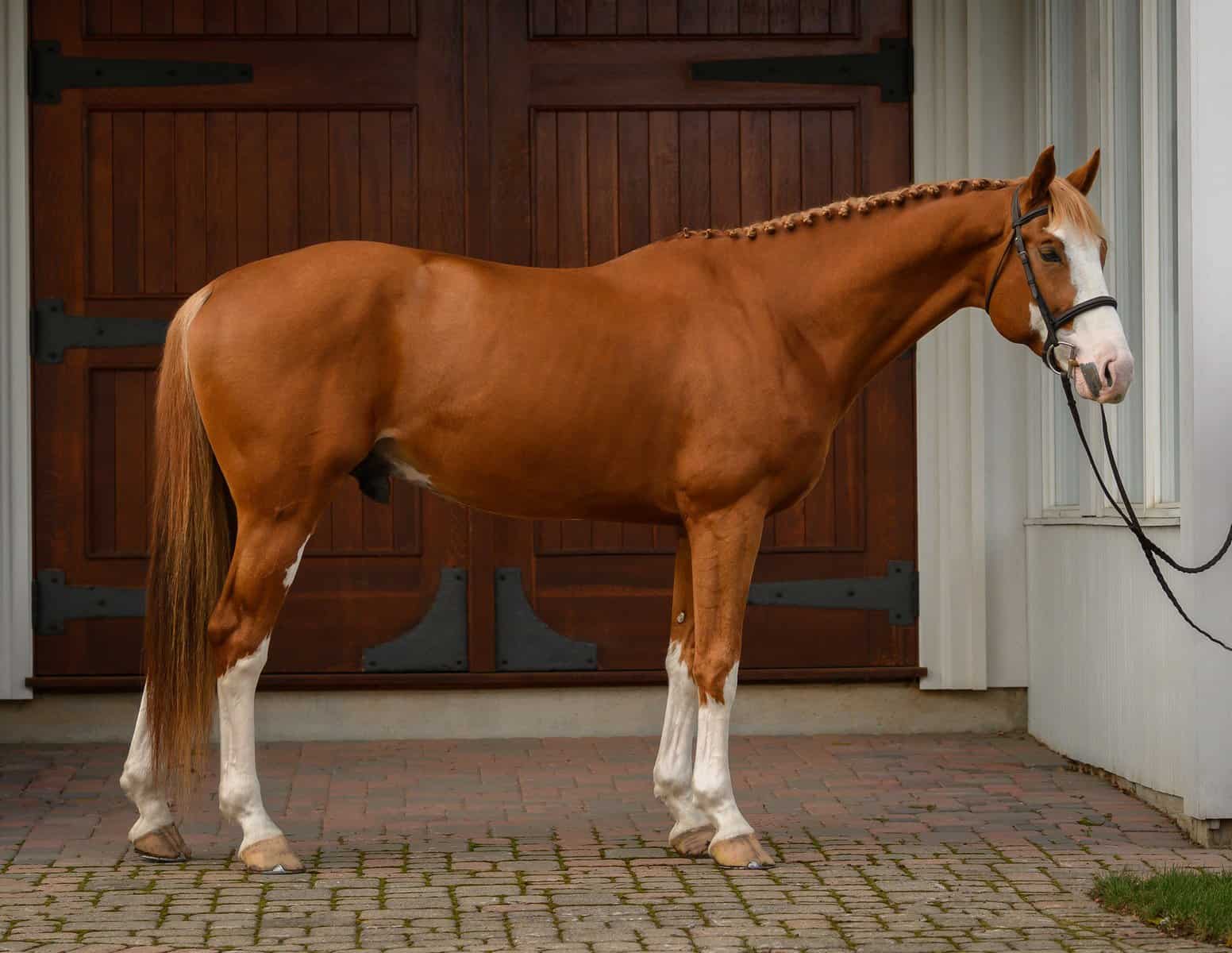
Hanoverian horses have their own fair share of distinct traits and features that make them stand out from the crowd.
At the same time, if your horse does not exhibit these traits, then chances are that you do not have a purebred Hanoverian horse.
So, here is what your horse needs to conform by to be registered by the Association:
- Its body must be rectangular, as opposed to it being square
- Its body parts need to be symmetrically integrated into the horse’s frame
- The eyes must be very expressive
- The neck must be strong and muscular
- The head needs to be on the larger side
- The hooves need to be well-shaped and firm
Besides those requirements, you can expect the following from your Hanoverian horse
- The horse’s gait needs to be observable both from the front and from the rear. It needs to be straight, with no crossing over at any time
- Its movement needs to be springy yet light, so if your horse seems a bit impulsive while walking that’s a red flag
- Your horse should not be too large or too small either, and their body needs to blend into itself, so it can’t have an abnormally large head or torso
The Main Uses of the Hanoverian Horse Breed
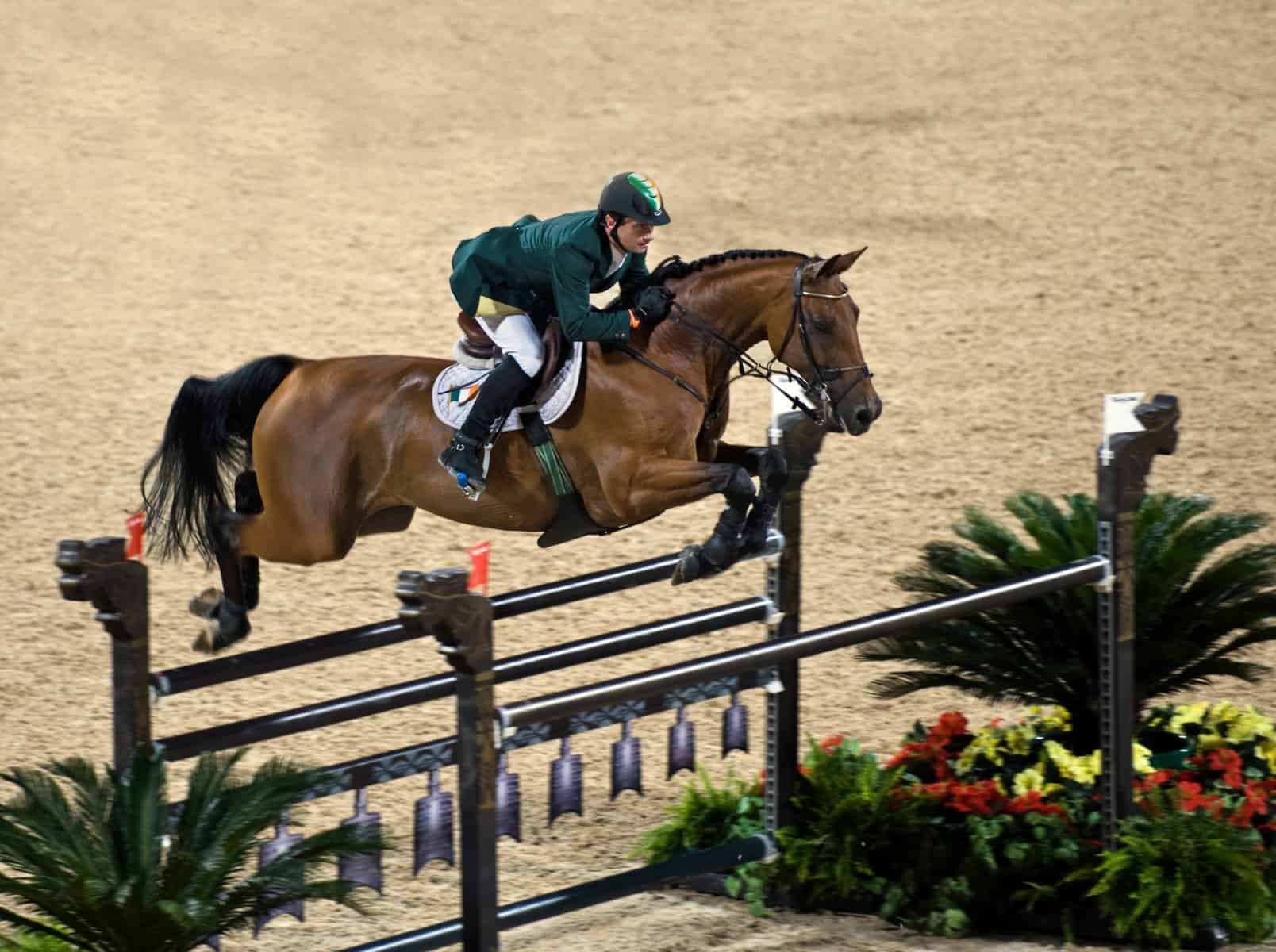
As mentioned, the Hanoverian horse breed is a very versatile option. The most common uses for the breed are the following:
- Its main usage across the ages has been as a coach horse
- It was also used a lot in the military as a warhorse
- It became a top choice as a jumping horse thanks to its performance in the Olympics
- It also became a famous hunter horse, taking the number one spot in a list made by the United States Hunter Federation
- It became a top choice for international dressage events thanks to its elegance
- It was often times used in showjumping competition, ranking in the top five breeds for the sport at one point
- It took the third spot as the best eventing horse breed for the World Breeding Federation for Sports Horses
Conclusion
The Hanoverian horse breed is by far one of the most versatile and popular options on the market, and for good reason too.
This breed has won many different awards over the years, even ranking first in the Olympics for a time.
So, if you want to invest into a good horse breed that can compete or be a standard pleasure riding option, definitely go for it.
Frequently Asked Questions (FAQs)
What Makes a Hanoverian Horse Unique?
Hanoverian horses are unique in that they are elegant, strong and robust horses that can take on any challenge whatsoever.
Are Hanoverian Horses Friendly?
Hanoverian horses are very friendly and easygoing horses. This makes them perfect for families and beginners alike.
What Was the Queen’s Favorite Breed of Horse?
It is believed that Queen Elizabeth’s favorite horse breed was the Thoroughbred.
What is the Gentlest Horse Breed?
The gentlest horse breed title is believed to be a close tie between the following breeds:
- The American Quarter Horse
- The Morgan Horse
- The Appaloosa Horse
Contents
- Hanoverian Horse Breed: Origins and History
- Hanoverian Horses’ Appearance
- Hanoverian Horses: Height and Weight
- Colors and Markings of the Hanoverian Horse Breed
- Behavior and Temperament
- Grooming Hanoverian Horses
- Hanoverian Horses: Diet and Nutrition
- Health Issues of the Hanoverian Horse Breed
- Unique Characteristics of the Hanoverian Horse
- The Main Uses of the Hanoverian Horse Breed

